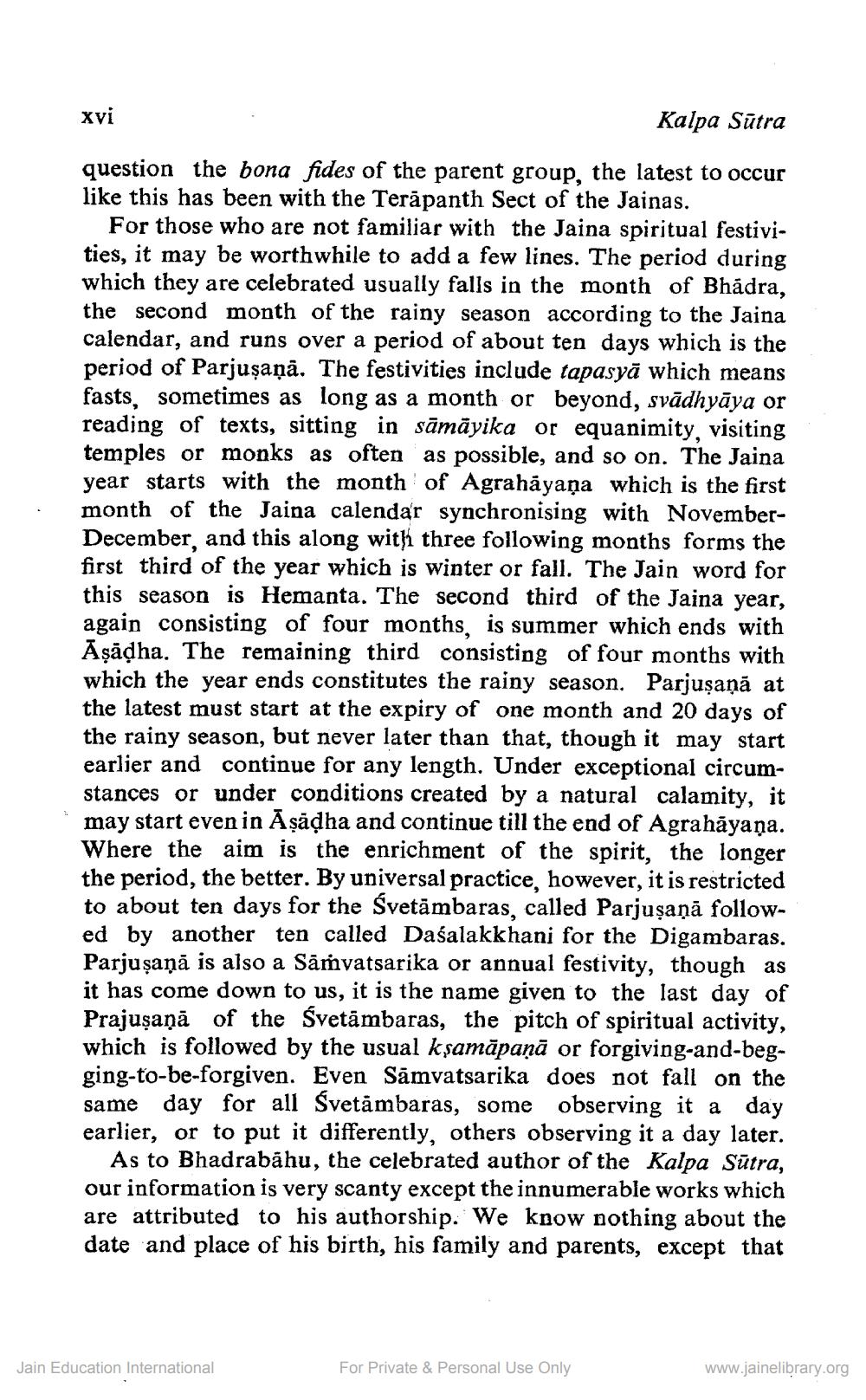________________
Xvi
Kalpa Sūtra
question the bona fides of the parent group, the latest to occur like this has been with the Terāpanth Sect of the Jainas.
For those who are not familiar with the Jaina spiritual festivities, it may be worthwhile to add a few lines. The period during which they are celebrated usually falls in the month of Bhadra, the second month of the rainy season according to the Jaina calendar, and runs over a period of about ten days which is the period of Parjuşaņā. The festivities include tapasyā which means fasts, sometimes as long as a month or beyond, svādhyāya or reading of texts, sitting in sāmāyika or equanimity, visiting temples or monks as often as possible, and so on. The Jaina year starts with the month of Agrahāyaṇa which is the first month of the Jaina calendar synchronising with NovemberDecember, and this along with three following months forms the first third of the year which is winter or fall. The Jain word for this season is Hemanta. The second third of the Jaina year, again consisting of four months, is summer which ends with Ā§ādha. The remaining third consisting of four months with which the year ends constitutes the rainy season. Parjuşaņā at the latest must start at the expiry of one month and 20 days of the rainy season, but never later than that, though it may start earlier and continue for any length. Under exceptional circumstances or under conditions created by a natural calamity, it may start even in Āşādha and continue till the end of Agrahāyaṇa. Where the aim is the enrichment of the spirit, the longer the period, the better. By universal practice, however, it is restricted to about ten days for the Svetāmbaras, called Parjuşaņā followed by another ten called Daśalakkhani for the Digamba Parjuşaņā is also a Sāṁvatsarika or annual festivity, though as it has come down to us, it is the name given to the last day of Prajuşaņā of the Svetāmbaras, the pitch of spiritual activity, which is followed by the usual kşamāpaņā or forgiving-and-begging-to-be-forgiven. Even Sāmvatsarika does not fall on the same day for all Svetämbaras, some observing it a day earlier, or to put it differently, others observing it a day later.
As to Bhadrabāhu, the celebrated author of the Kalpa Sūtra, our information is very scanty except the innumerable works which are attributed to his authorship. We know nothing about the date and place of his birth, his family and parents, except that
Jain Education International
For Private & Personal Use Only
www.jainelibrary.org




